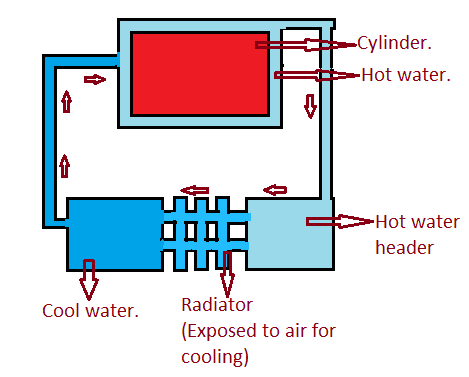1. How does an automotive gas turbine differ from a conventional internal combustion engine?
In an automotive gas turbine, also known as a gas turbine engine, the combustion process occurs continuously and at a constant pressure. This is in contrast to a conventional internal combustion engine, where combustion happens in discrete cycles at varying pressures. Gas turbines are generally more fuel-efficient at high speeds and offer a better power-to-weight ratio, but they may lack the low-end torque typical in traditional engines.
2. What is a ‘series-parallel hybrid’? Give two practical examples.
A series-parallel hybrid combines elements of both series and parallel hybrid configurations. This means the vehicle can operate on electric power alone, internal combustion engine power alone, or a combination of both. Examples of series-parallel hybrids include the Toyota Prius and the Chevrolet Volt. The Prius primarily operates in parallel mode, while the Volt can function in both series and parallel modes.
3. List the key advantages of an HCCI engine.
Homogeneous Charge Compression Ignition (HCCI) engines offer improved fuel efficiency, reduced emissions, and a smoother combustion process compared to traditional spark-ignition engines. They achieve combustion through the compression of a homogeneous air-fuel mixture, similar to diesel engines, but without the need for spark plugs.
4. What is a plug-in hybrid?
A plug-in hybrid is a type of hybrid vehicle that can be charged externally, usually by plugging into an electrical outlet. These vehicles have both an internal combustion engine and an electric motor, providing flexibility in terms of power sources. The electric motor can propel the vehicle for a certain distance on battery power alone, reducing the reliance on the internal combustion engine and decreasing overall fuel consumption.
5. Define a fuel cell?
A fuel cell is an electrochemical device that converts the chemical energy from a fuel (usually hydrogen) directly into electrical energy through a reaction with an oxidizing agent (usually oxygen or air). Unlike traditional batteries, fuel cells can continuously produce electricity as long as fuel and an oxidizing agent are supplied, making them highly efficient and environmentally friendly.
6. Explain the concept of regenerative braking?
Regenerative braking is a technology that recovers and stores the kinetic energy usually lost as heat during braking in a vehicle. Instead of dissipating this energy as heat through traditional braking systems, regenerative braking systems convert it into electrical energy, which can be stored in batteries or used to power the vehicle’s electric motor. This improves overall energy efficiency and extends the range of electric and hybrid vehicles.
7. What is a square engine?
The term “square engine” refers to an engine with equal bore and stroke dimensions, resulting in a square or nearly square piston configuration. This design is often associated with achieving a balance between power and torque, leading to smoother engine operation. Square engines are commonly found in various motorcycle models.
8. What advantage does using two spark plugs in an engine provide?
Having two spark plugs in each cylinder of an engine can enhance combustion efficiency by promoting a more even and rapid flame front propagation. This leads to improved fuel combustion, enhanced power output, and reduced emissions. The dual-spark-plug configuration is often employed in high-performance engines to optimize combustion under different operating conditions.
9. What is an HCCI engine?
Homogeneous Charge Compression Ignition (HCCI) engines utilize a combustion process that combines characteristics of both spark-ignition and compression-ignition engines. These engines operate by compressing a homogeneous air-fuel mixture until it spontaneously ignites, eliminating the need for a spark plug. HCCI engines offer advantages such as increased fuel efficiency and reduced emissions, making them a promising technology for the future of internal combustion engines.
10. What is the significance of the terms ‘R.A.C.’ and ‘S.A.E.’?
‘R.A.C.’ stands for ‘Royal Automobile Club.’ It is an organization that provides roadside assistance services, primarily in the United Kingdom. The R.A.C. is known for its long history, dating back to 1897, and has played a crucial role in the development of motoring services and advocacy for motorists. They offer services such as vehicle breakdown assistance, insurance, and various member benefits.
‘S.A.E.’ stands for the ‘Society of Automotive Engineers.’ This is a global professional organization that focuses on advancing mobility engineering and promoting standards for the automotive industry. S.A.E. sets standards for various aspects of vehicle design, including measurement, testing, and materials. Their standards are widely adopted in the automotive sector, ensuring compatibility and interoperability among different vehicles and components. The society also plays a vital role in fostering collaboration and knowledge-sharing within the automotive engineering community.


